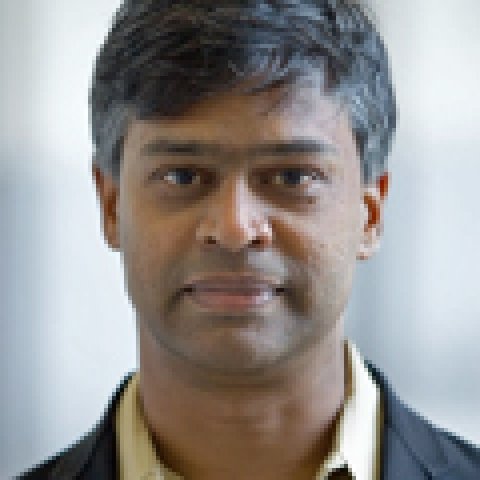Arvind Rajagopal
Former Fellow
Professional Affiliation
Associate Professor, Department of Culture and Communication, New York University
Expert Bio
During graduate school, when I informed one of my faculty advisers in sociology about my interest in bringing the study of culture and of development together in my research, she replied sharply, "You can't do that!" "Culture" and "development" belonged in different camps, as was shown by the composition of the student reading groups addressing these topics. The "culture" group was composed entirely of those who were either Jewish or foreign (i.e., not native to the U.S.), and focused exclusively on the west, while the "development" group was dominated by White Anglo-Saxon Protestants. In fact, the sociology of non-western societies, in the U.S. was largely confined to questions of "development." It was by learning to think historically, and being attentive as well to the political dynamics that shaped my objects of study, that I was able to make some headway. My dissertation addressed the phenomenon of a Hindu epic serialized for Indian television, whose success was followed by a nation-wide Hindu nationalist campaign that shared some of its key symbols, and eventually won state power. The dissertation grew into a book. I showed how Hindu militant violence did not arise from a timeless domain of religious fanaticism. Rather, it emerged as a bid for power when the ruling Congress party was in decline, when market liberalization and the expansion of media had increased the scope for popular mobilization, but as it happened, towards social goals antithetical to a pluralist civil society. Hindu martial epics broadcast on state television seemed to materialize a dream of Hindu nationalists, of Indians coming together to commemorate the valor and virtue of Hinduism as a fighting faith. In actuality the Hindu resurgence was a technological illusion, one that appeared as, and with mobilization became, a social fact. Expanding consumer markets and communications media enacted a perceptual shift in Hindu identity, which could now be expressed publicly as a mediatic event, artifactual in character, but used to symbolize a united and organic community. The symbolic violence of replacing a secular media culture with a Hindu media culture that in part, stressed epic warfare, was followed by waves of physical violence against Muslim communities by Hindu militants, presented as necessary self-defense. The election of the BJP to the status of ruling party soon thereafter indicated the legitimization of Hindu violence as not aberrant but law-making and foundational, with the media playing an indispensable part in rendering Hindu identity symbolically dominant. Focusing on the material practices by which Hindu nationalism propagated itself, e.g., public rallies and narrowly targeted campaigns, aided by the sale of armbands, stickers, audio and videotapes and other symbols of Hindu identity, helped me to elucidate the importance of incremental shifts in their rhetoric and strategy, little noticed by other commentators. Building on these insights, I was able to show the ways in which Hindu nationalist political strategies were capitalizing on changes ushered in with globalization, as against critics who dwelt on atavism and primordiality as their key explanations. The killings of 2002 in Gujarat were the first occasion of such violence under a Hindu nationalist government. They represent an important set of developments I hope to understand in my present research.
Education
Ph.D. in Sociology, University of California, Berkeley, 1992
Subjects
India,Nationalism,South Asia,Media
Experience
- Associate Professor, Department of Culture and Communication, New York University, 1998-present; Affiliate faculty in Department of Sociology, and Department of Social and Cultural Analysis, NYU
- Member, School of Social Science, Institute of Advanced Study, Princeton, 1998-99
- Assistant Professor, Department of Communication, Purdue University, 1991-98
Expertise
Historical sociology; religious nationalism; politics and culture of emerging markets; South Asia; media
Wilson Center Project
"Publicity and Religious Violence in Gujarat"
Project Summary
Between February and August 2002, Hindu militants killed more than 2,000 Muslims in Gujarat, India, while state and central governments stood by or assisted the militants. The Hindu nationalist Bharatiya Janata Party (Indian People's Party, or BJP) was soon rewarded with a landslide victory at the Gujarat polls, with its highest margins in those districts where the violence had been concentrated. In my research project, I seek to understand how violence may grow in a modern electoral democracy like South Asia, and to develop a comparative perspective for communication policy that mitigates violence in diverse ethnic, religious and linguistic contexts.
Major Publications
- "The Gujarat Experiment and Hindu National Realism: Lessons for Secularism," in Anuradha Needham and Rajeswari Sunder Rajan eds. Comparative Perspectives on Secularism from South Asian Debates, Duke University Press (6800 words), In Press
- "The Menace of Hawkers: Property Forms and the Politics of Market Liberalization in Mumbai" In Caroline Humphrey and Katherine Verdery eds. Changing Property Regimes in Eastern Europe, Wenner Gren Foundation and Bergen Press, London, U.K. pp. 227-250, 2004
- Politics After Television: Religious Nationalism and the Reshaping of the Public in India (Cambridge University Press, Cambridge, U.K., 2001)
Insight & Analysis by Arvind Rajagopal
- Video
The Lesson of Gujarat


